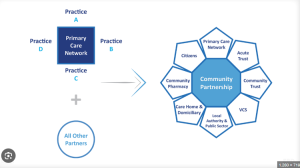
In today’s complex healthcare system, understanding the different types of health professionals is crucial. Patients often interact with multiple healthcare providers during treatment, and each professional plays a unique role in ensuring quality care. Recognizing who these professionals are, what they do, and how they contribute to the healthcare ecosystem empowers patients to make informed decisions, improves communication, and leads to better health outcomes.
In this article, we will explore why it is important to understand the various types of health professionals, how they work together, and what benefits this knowledge offers to individuals, families, and communities.
The Diversity of Health Professionals
Healthcare is not just about doctors and nurses. It encompasses a wide range of health professionals including:
- Physicians (MD/DO)
- Nurses (RN, LPN, NP)
- Pharmacists
- Therapists (Physical, Occupational, Speech)
- Dentists and Dental Hygienists
- Dietitians and Nutritionists
- Medical Laboratory Technicians
- Radiologic Technologists
- Psychologists and Psychiatrists
- Social Workers and Case Managers
Each of these professionals has specific training, certifications, and responsibilities. Understanding their roles helps patients and families navigate the healthcare system more effectively.
Better Communication and Coordination
One of the primary reasons to understand different health professionals is to improve communication and care coordination. For instance, when a patient knows that a nurse practitioner can diagnose illnesses and prescribe medications, they may feel more confident asking medical questions during a routine visit.
Similarly, knowing that a physical therapist specializes in rehabilitation after surgery helps patients follow through with prescribed exercises, improving recovery. When patients understand each provider’s scope of practice, they know whom to turn to for specific concerns, reducing confusion and delays in care.
Enhancing Patient Empowerment
Health literacy is a powerful tool, and part of that is knowing who is responsible for different aspects of care. Understanding the various health professionals:
- Increases trust in the healthcare team
- Helps patients ask the right questions
- Encourages active participation in health decisions
For example, a cancer patient might see an oncologist, a nurse navigator, a dietitian, and a social worker. Knowing each person’s role enables the patient to utilize all available resources and address both medical and emotional needs.
Avoiding Medical Errors
Medical errors can occur when there is a breakdown in communication. When patients are unclear about roles, they might give the wrong information to the wrong person or not follow up appropriately. Understanding the healthcare team structure minimizes such risks.
For example, a patient might mistakenly believe the pharmacist’s only role is to dispense medications, overlooking their ability to provide drug interaction advice. Consulting the right health professional at the right time can prevent medication errors, misdiagnoses, and unnecessary treatments.
Promoting Preventive Care
Health professionals are not only involved in treating illnesses—they are also key players in preventive care. Primary care physicians, nurse practitioners, and public health nurses often focus on health education, screenings, and vaccinations. Dietitians help prevent chronic diseases like diabetes and hypertension through nutritional guidance.
By recognizing the preventive roles of different professionals, individuals can seek proactive support, potentially avoiding serious health issues down the line.
Supporting Specialized Needs
Different populations have different health needs. Children benefit from pediatricians, while older adults may need geriatricians. Women may seek care from OB/GYNs, while people with disabilities often work with occupational therapists.
Mental health professionals such as psychologists and social workers provide emotional and behavioral support. Understanding who provides what services helps families find the right care for their specific situations, increasing satisfaction and effectiveness.
Encouraging Team-Based Healthcare
Modern healthcare relies on an interdisciplinary team approach. Each member contributes specialized knowledge to create a comprehensive care plan. For example, in a hospital setting, a patient’s care team may include:
- A physician to oversee treatment
- A nurse to monitor vital signs and administer medications
- A physical therapist to assist with mobility
- A dietitian to assess nutritional needs
- A case manager to plan discharge and follow-up care
Knowing the roles of each team member fosters cooperation and helps patients appreciate the importance of collaboration in delivering high-quality healthcare.
Saving Time and Resources
When patients understand the roles of various health professionals, they can access care more efficiently. Rather than waiting weeks to see a physician for a minor issue, they might choose to visit a nurse practitioner or urgent care provider. This can lead to:
- Faster diagnosis and treatment
- Reduced healthcare costs
- Decreased emergency room visits
It also allows doctors to focus on more complex cases while other trained professionals handle routine care.
Educating Future Generations
Teaching young people about the different types of health professionals fosters early interest in healthcare careers and builds a more informed society. Career awareness programs in schools often include information about nursing, laboratory sciences, radiology, and therapy professions, in addition to medicine.
Understanding these career paths also helps students choose educational goals and contributes to solving healthcare workforce shortages.
Building Trust and Respect
When patients understand the qualifications and responsibilities of various health professionals, they are more likely to respect and trust their expertise. This mutual respect leads to better relationships, stronger therapeutic alliances, and improved adherence to treatment plans.
Trusting a nurse’s wound care instructions or a pharmacist’s advice on side effects can greatly influence a patient’s health outcomes.
Conclusion
Understanding the different types of health professionals is essential for navigating today’s complex healthcare landscape. It empowers patients, improves communication, reduces errors, supports preventive care, and encourages efficient use of healthcare resources. Each professional—from doctors and nurses to therapists and pharmacists—plays a critical role in delivering holistic, patient-centered care.
By being aware of who does what in healthcare, individuals can make better choices, participate more actively in their own care, and contribute to a more effective and compassionate healthcare system.